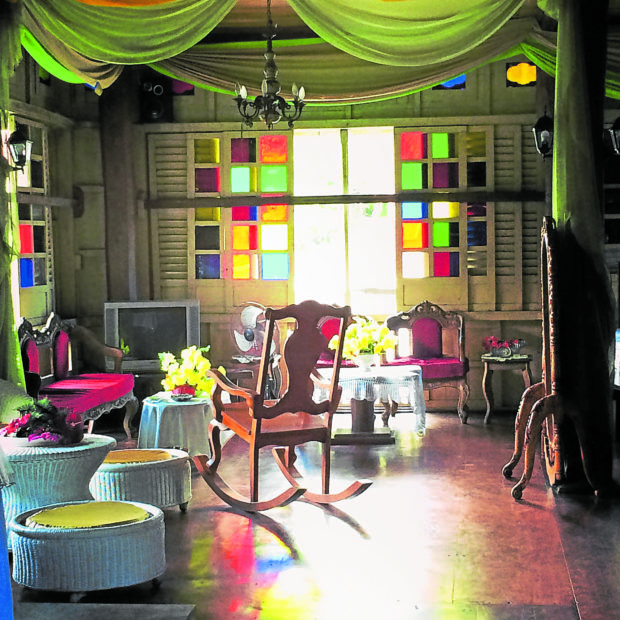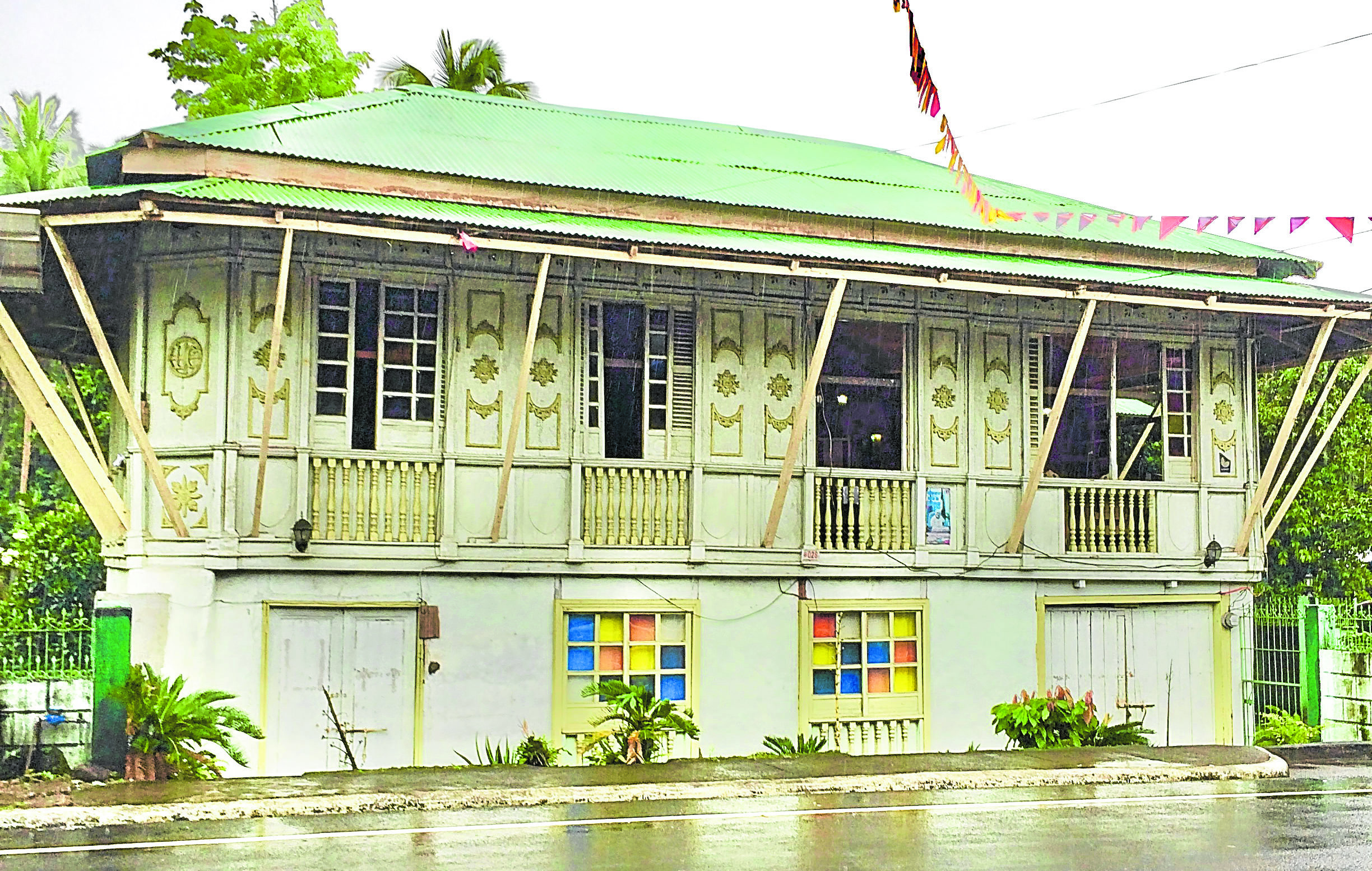Recently I watched the teleserye “I Left My Heart in Sorsogon,” simply because I was homesick. Although I was born in Manila, my parents were both from Sorsogon. My mother was born in Juban, my father in Casiguran.
I wanted to see the changes in Sorsogon. My last visit was in 2014 with my daughter and son and we did see most of the tourist spots. We stayed in my grandfather’s old bahay na bato in Juban, which is now a quaint bed and breakfast, Casa Feliz, run by the new owners who restored the house built before 1900 with the help of the National Museum.
It was heartwarming to hear the Bicolano words and phrases I grew up with: “tabi” the equivalent of “po” including the over polite “amo tabi” (yes po) and the uber-superlative “salamatunon” or profuse thanks. We spoke Bicol and Tagalog at home in Manila. With a stream of visiting relatives and two aunts who lived with us, it was easy to pick up the dialect.
Nothing familiar
However, nothing seemed familiar to me as the teleserye unfolded. Although we hardly visited the capital, Sorsogon City to me was just a place where I transacted business—a place to get documents for my parents’ estate, etc.
In the teleserye there was a winding highway and a beautiful circular library. The last time I visited the museum, it was a dingy place with a few faded photographs. Now there is a Museo Sorsogon inaugurated only in March 2021, another must-see when I visit, hopefully soon, with my grandchildren.
The teleserye stars Heart Evangelista, the wife of Sorsogon Gov. Chiz Escudero, now running for senator. In the CNN program on senatoriables, Escudero said he built roads to reach most of the far-flung barangay.

In one of my father’s lots in Maalo, Juban, that has since been subjected to land reform, it took four hours of trekking to reach it because there were no roads. I hope to see it one day, if, indeed, it can be reached now by road. My father donated a school there.
I remember a small coffee shop in the city, serving fresh juices and salads, and the Bicol vegetarian dishes. Anything with gata or coconut milk is gulay, whether it is squash, ripe saba with a dash of salt, or puso (banana heart), and the ubiquitous gabi leaves, the dish known as laing. And the crabs, fresh shrimps and suso (snails) all swimming in gata! Just thinking of them makes my mouth water. Although I’m one Bicolana who can’t stand hot chilies!
Childhood visits
In the teleserye, there was a scene where they served buko juice from freshly picked coconut. I remember this in my childhood visits.
They also featured the pili fruit and the nut encased in a hard wooden shell. To get the nut, you have to pound the shell with a hammer or knife which takes a lot of skill! However, I know that the pili fruit is cooked in boiling water briefly and when the black covering is peeled, it reveals a soft, greenish-purplish fibrous meat with a nutty flavor. When mashed it can be enjoyed with patis (fish sauce) or sugar. My aunt, Tia Encar, taught me this.
An episode showed Heart in a quest for a pili nut recipe. Growing up, I remember the varied pili candies. There’s molido, a hard mixture of grated pili nuts, sugar, sometimes mixed with sweet potato. It is cut into diamond-shaped blocks.
Another pili dessert is conserva. So rich it is cooked in panucha or coconut sugar encrusted with pili nuts.

My favorite is the budin or mazapan de pili: pure, ground pili nuts cooked in condensed milk or coconut milk and sugar. We used to make tiny square paper boxes to contain the mazapan mixture before baking.
Last but not least, the caramelized pili we call caramelitos. Tia Encar was so adept at cooking this, she knew exactly when to stretch the pili and sugar mixture, it crystallizes in midair, the pili wrapped in translucent amber!
Another Bicol product is abaca. Considering that the character played by Heart is a couturier, abaca was featured in her fashion show. Abaca products do need a design upgrade.
Although the scenes show a modern beach resort, there was no mention of it or where it is located in Sorsogon. The only places they mentioned were Irosin and Bulusan Lake, a tourist spot.
Poorest provinces
Our province is one of the poorest due to frequent typhoons and lack of connectivity. The airport and train stop in Legazpi, Albay. It takes another hour’s travel by bus or van to go to Sorsogon. Hopefully there will soon be an airport in Sorsogon and the train can go further than Albay.
At least we already have electricity in Juban and internet. Some government websites are accessible. But still, LBC does not yet deliver to Juban and packages must be picked up in Sorsogon City, 30 minutes away. No postman either.
I used to be a member of Sorsogon Heritage Society, founded by Sorsoganon writers like former Mr. & Ms. publisher and Inquirer founding chair Eggie Duran-Apostol, and the late writer Azucena G. “AG” Uranza. I contributed to some volumes of “Sarabihon,” the Society’s literary journal. I started a series of women of Sorsogon, however, when AG passed away, the journals were discontinued for lack of funds. I wish we can revive it.
Meanwhile it’s nice to hear again the Sorsoganon terms of endearment I haven’t heard in a long time, thanks to “I Left My Heart in Sorsogon,” which is how I feel at the moment—missing my parents and Manoy Johnny, who died of COVID in March 2020. Manoy means kuya or older brother and manay is for ate or older sister, terms used in the TV series. Mamai or mai for mother and papai or pai for father were terms my aunt used for her parents.
The series just ended but I’m glad I made sure to watch it and reconnect with my Sorsogon roots. —CONTRIBUTED INQ









































